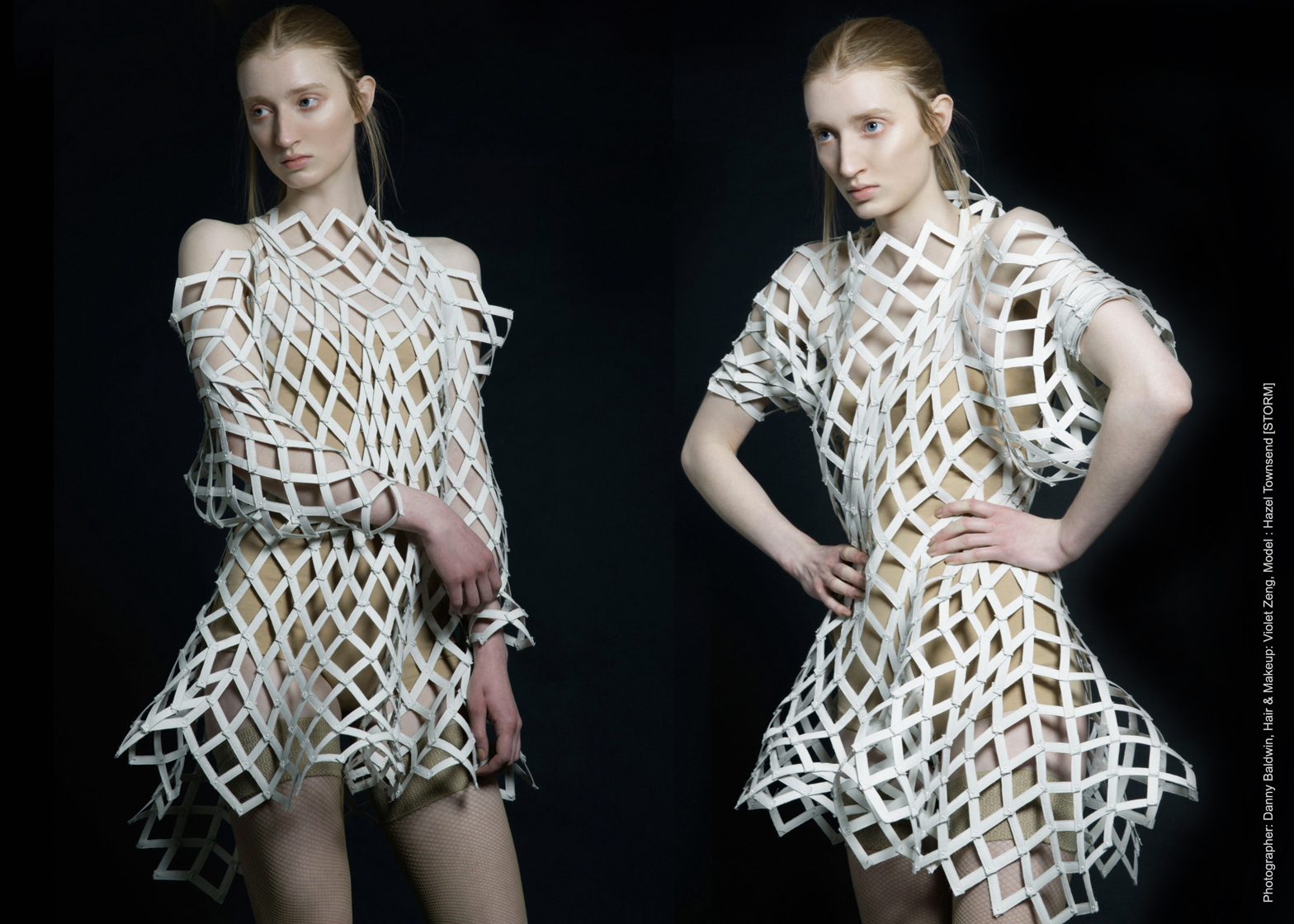Dezeen promotion: a clock that uses UV-responsive liquid to tell the time, eco-friendly packaging made from algae, and modular clothing are among the prototype designs shortlisted for this year's Lexus Design Award.
Eight panel finalists have been announced for the Lexus Design Award 2016, and a further four have been selected to create prototypes of their designs to present at Milan design week in April.
Organised by Japanese car brand Lexus International, the annual award aims to support young designers from around the world.
Related story: moving petals express "fragility of life" in Nao Tamura's installation for Lexus
More than 1,230 entries were received for this year's award, from 73 different countries.
The winners were selected by a judging panel including Japanese architect Toyo Ito, New York's Museum of Modern Art senior curator Paola Antonelli, Hong Kong's M+ museum curator Aric Chen, design critic Alice Rawsthorn, Designboom chief editor Birgit Lohmann, and Tokuo Fukuichi, president of Lexus International.
The four finalists selected to develop their prototypes will now be paired with high-profile mentors from the industry.
Japanese designers Akira Muraoka, Noriaki Maetani and Kosuke Araki, who work together under the name AMAM, will explore their idea for using agar – a gelatinous material sourced from marine algae – to create environmentally friendly packaging.
They will be paired with UK designer Max Lamb, who is known for his experimental approach to materials. "For me smart ideas are more important than smart technology," said Lamb.
Canadian-Italian designer Angelene Laura Fenuta will be paired with Italian-American designer and architect Elena Manferdini to develop Shape Shifters, an idea for a modular garment that can be used to create multiple outfits (main image).
Myungsik Jang from Korea will work on his concept for DADA, a block toy for children that uses pegs, holes and bands to create a huge variety of assembly options. He will be mentored by Chinese design duo Neri&Hu.
"We're looking for the idea to grow and enhance," said Rossana Hu, "to take a good idea further to become a better idea. We're looking for what it can be next."
STUDIO AYASKAN, which consists of Turkish designers Begum Ayaskan and Bike Ayaskan, will focus on realising its idea for a clock that uses UV rays to tell the time.
Called TRACE, the wall clock will use a light-responsive liquid that discolours to create a visual effect as time passes. The duo will be paired with Daniel Arsham and Alex Mustonen of US firm Snarkitecture, which has attracted international attention for its combination of experimental art and architecture.
An overall Grand Prix winner will be selected from these four, and will be announced on 11 April at an award ceremony in Milan.
The concepts proposed by the remaining eight finalists will also be presented in Milan as part of an exhibition around the four prototypes.
They include aniknown by Japanese designer Ayami Marugata, a project consisting of clothes for six kinds of animal.
Another of the projects is Bio-Vide by Japanese designer Takuma Yamazaki, which proposes creating a series of products made from fallen leaves.
Chinese designer Chulin Yang was selected for her hexagonal umbrella concept, which includes magnetic connections to encourage users to interact with each other.
Japanese designer Hiroto Yoshizoe proposed planters made from ceramic embedded with an ink that lets the owner known when the plants need water.
Oliver Staiano from the UK suggested a wireless lamp that would be made from magnetic rubber.
Ding Dong, Ma Jincai, Peter Luo and Huang Junxi from China designed a container called Drop Box that would allow supplies to be dropped into areas in need without a parachute.
Indian designer Deepak Jawahar teamed up with Irina Bogdan from Romania to design Slow Door – a structure made from cubes that would delay passing through an entrance to encourage users to think more carefully about their time.
Finally, Japanese group Owls, which consists of Takato Sasaki and Yuki Shinohara, proposed RESOLUTION OF SOUND LOCATION, a pair of headphones that could detect the source of any ambient sound and adjust the volume they emit accordingly.
All of the designs will be shown in the exhibition space at T32 Torneria/Carrozzeria, Via Tortona 32 from 11 April until 17 April.
Discover more about the Lexus Design Award here, and follow this year's event on Instagram @lexusdesignaward.

